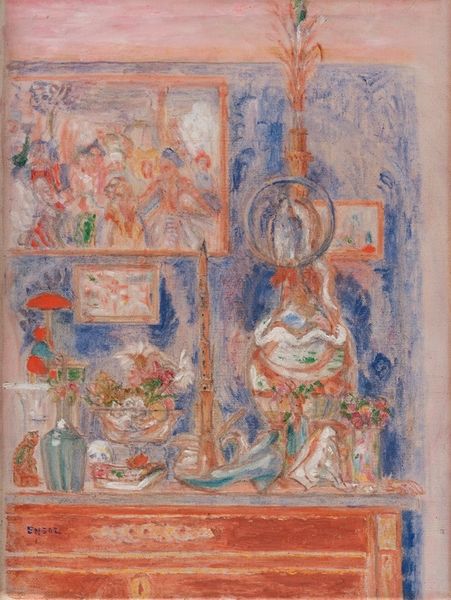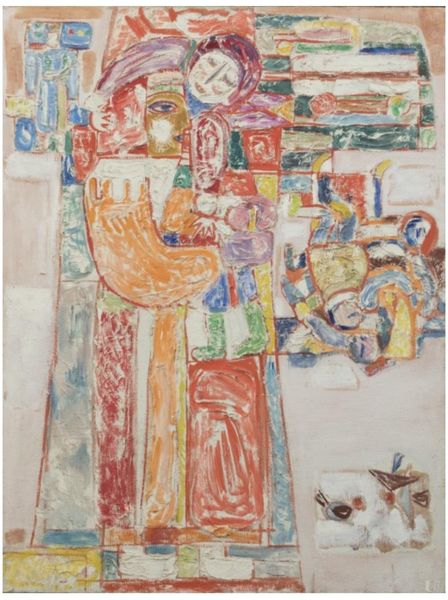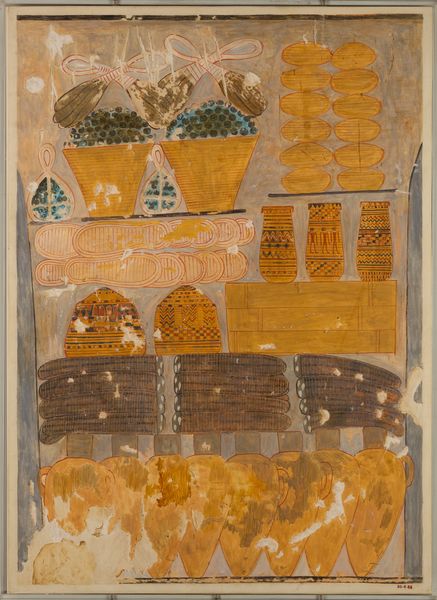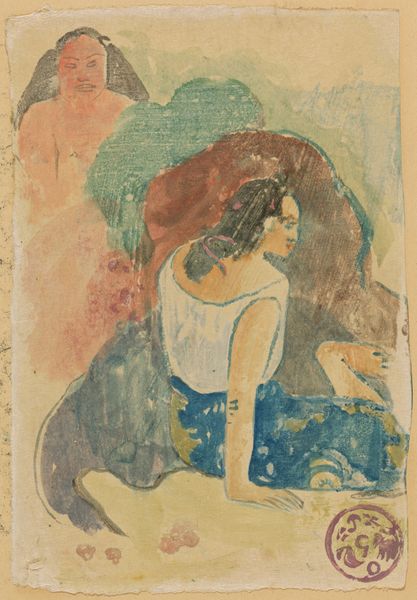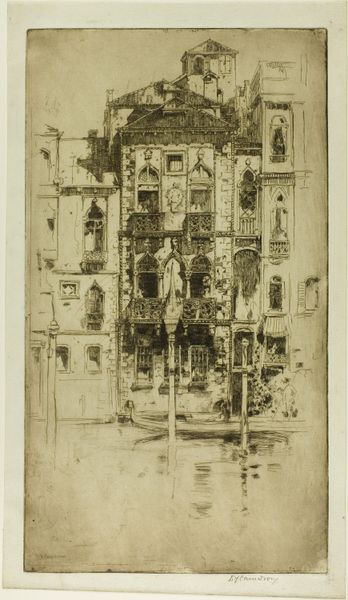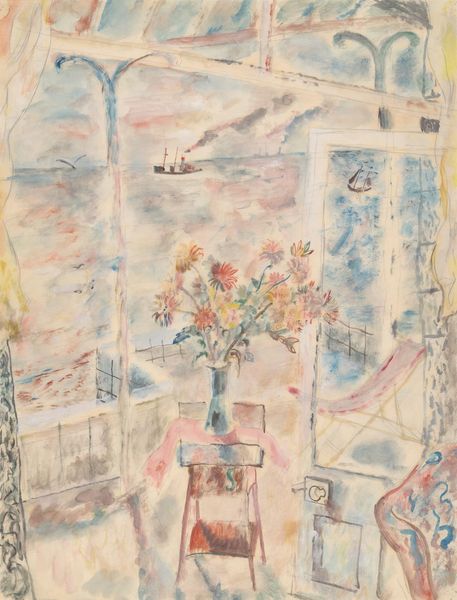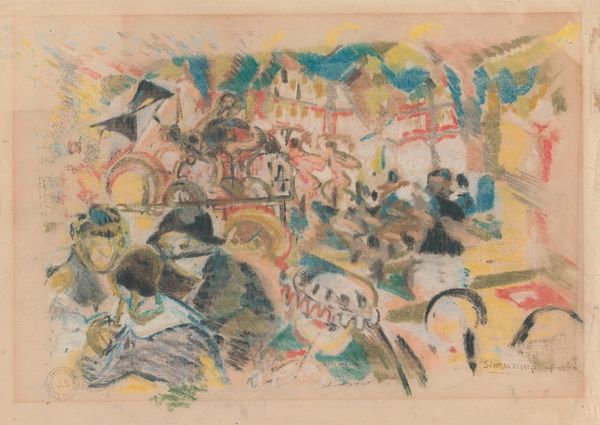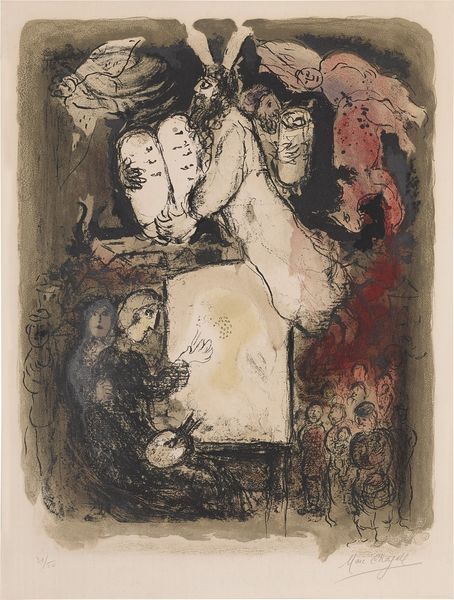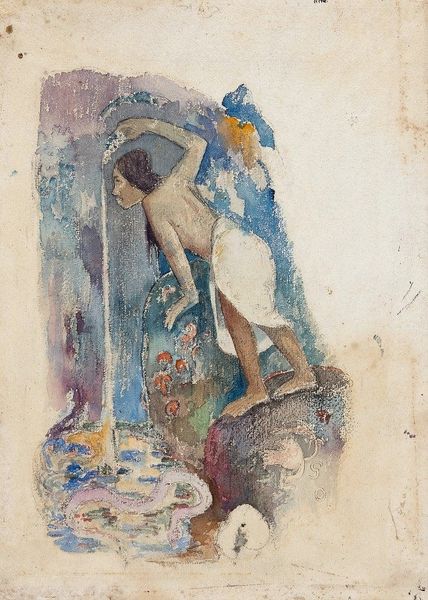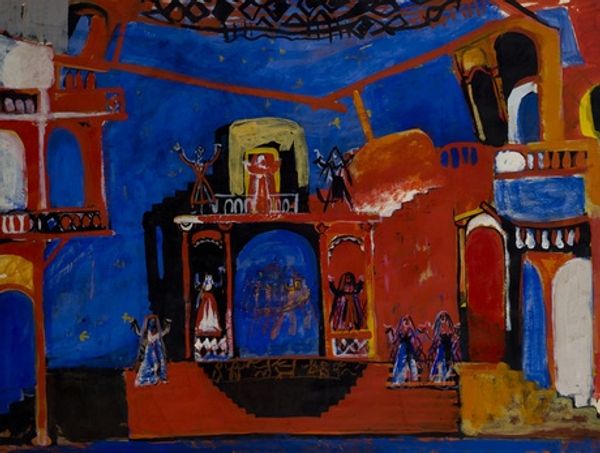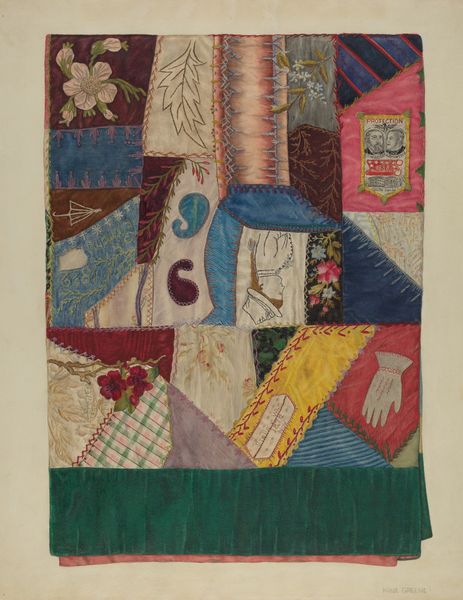
Stage Set Consisting Of Painted Panels, Fabrics, And Fans 1870 - 1890
0:00
0:00
painting
#
water colours
#
painting
#
japonisme
#
watercolor
Dimensions: sheet: 24.5 x 14.6 cm (9 5/8 x 5 3/4 in.)
Copyright: National Gallery of Art: CC0 1.0
Curator: This artwork, dating from between 1870 and 1890, is titled "Stage Set Consisting Of Painted Panels, Fabrics, And Fans". The artwork employs watercolor and drawing techniques. Editor: Wow, it looks like someone exploded a particularly fabulous orientalist fever dream onto paper. There’s this wonderfully chaotic energy to it. Curator: That energy reflects a movement called Japonisme. It gained momentum in France following the 1860s, when trade with Japan resumed, sparking great interest in Japanese aesthetics. The genre paintings and decorative arts had a real impact on artists looking to expand beyond Western traditions. Editor: Right, and I feel that! The piece seems like a wild collage—watercolors, fabric, and the very loose suggestion of a stage… I am drawn to how raw it feels, how little is actually "finished." It is like the ghost of an idea, half formed! Curator: The fabrics are quite fascinating. They represent a key material element in a society increasingly defined by global trade and cultural exchange. These pieces point to broader conversations around the commodification of culture, how cultural exchange becomes intrinsically bound to political and economic dynamics. Editor: You know, looking at this composition again, with its strange collage elements, I'm getting a sort of proto-surrealist vibe from this piece. Like something that came from a dream that then got assembled backwards! I imagine whoever made this was up all night drinking absinthe. Curator: What I find interesting here is the tension between the delicate watercolour depictions and the robust, textural elements of fabric. Editor: It's absolutely jarring, that friction! I think the beauty lies in the intentional layering, the artist's own dialogue with materials from another world. Curator: Exactly. It's also worth asking questions around cultural appropriation when viewing artworks that explicitly borrow from other cultural traditions. But by exploring this intersectionality, we can better understand the artwork's social relevance, even today. Editor: What a captivating mishmash! This thing keeps evolving every time I give it another look! Curator: Yes. By analyzing Japonisme art in these historical, material and artistic contexts, we can enrich the interpretation and cultural legacy it offers today.
Comments
No comments
Be the first to comment and join the conversation on the ultimate creative platform.
